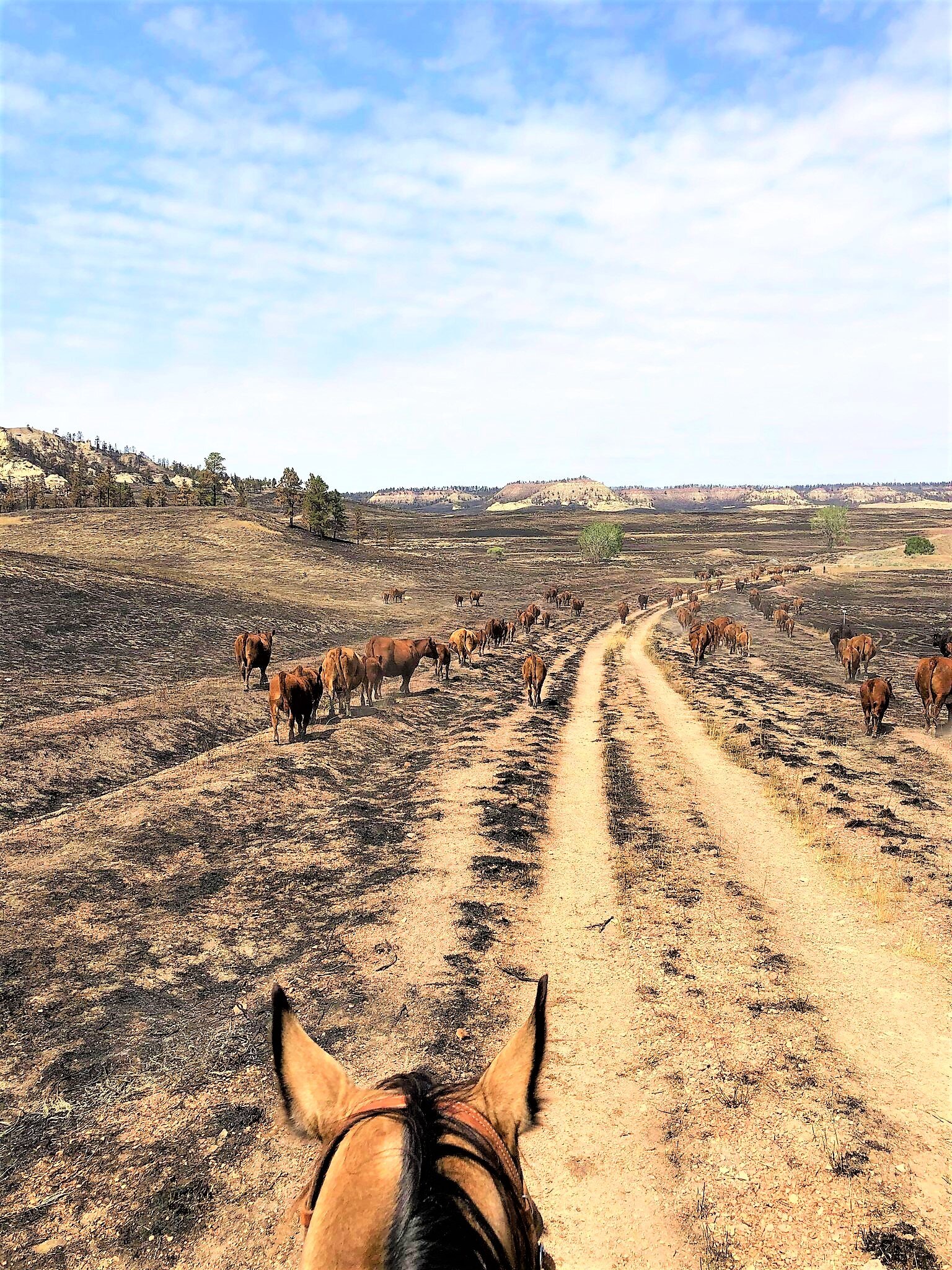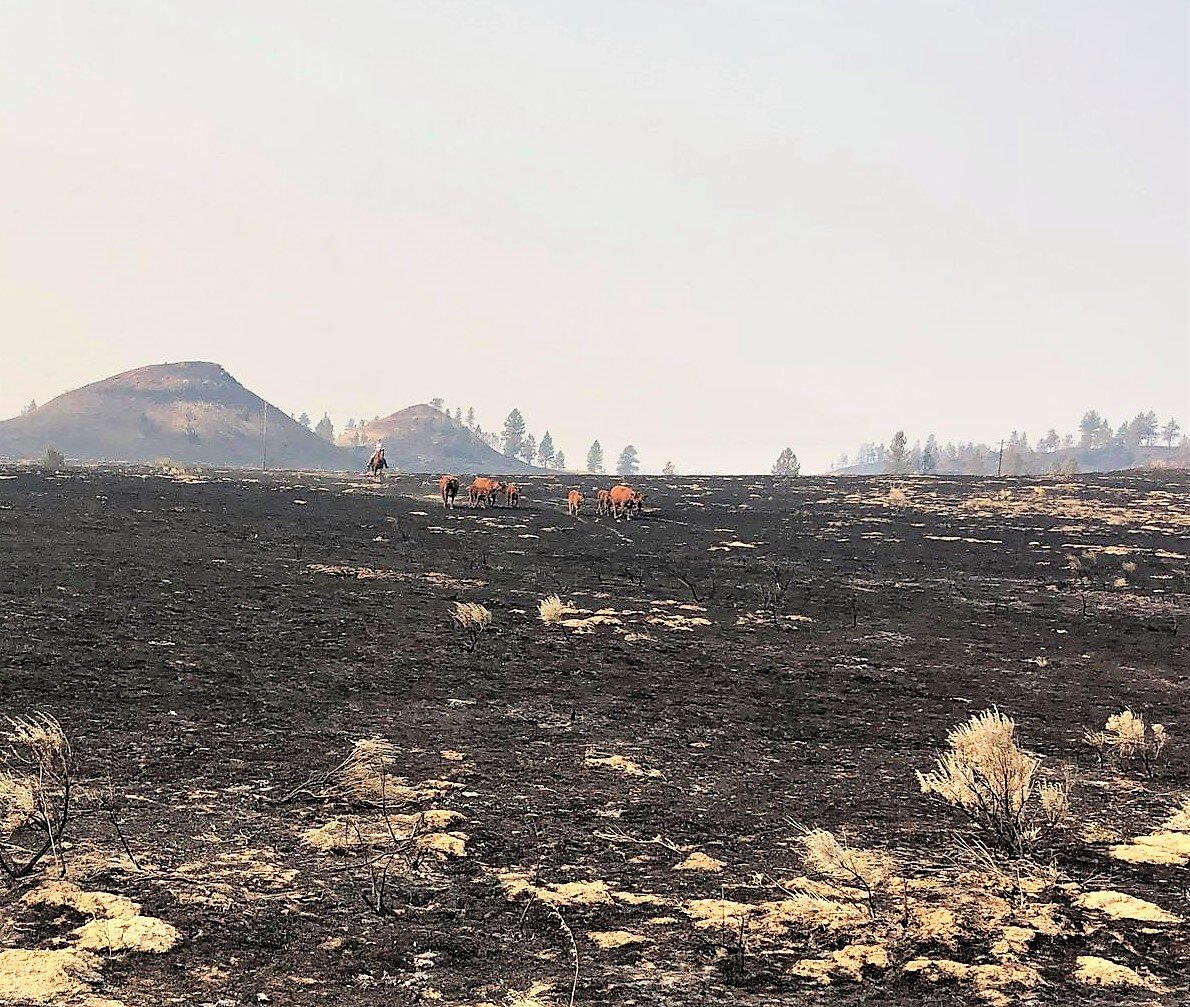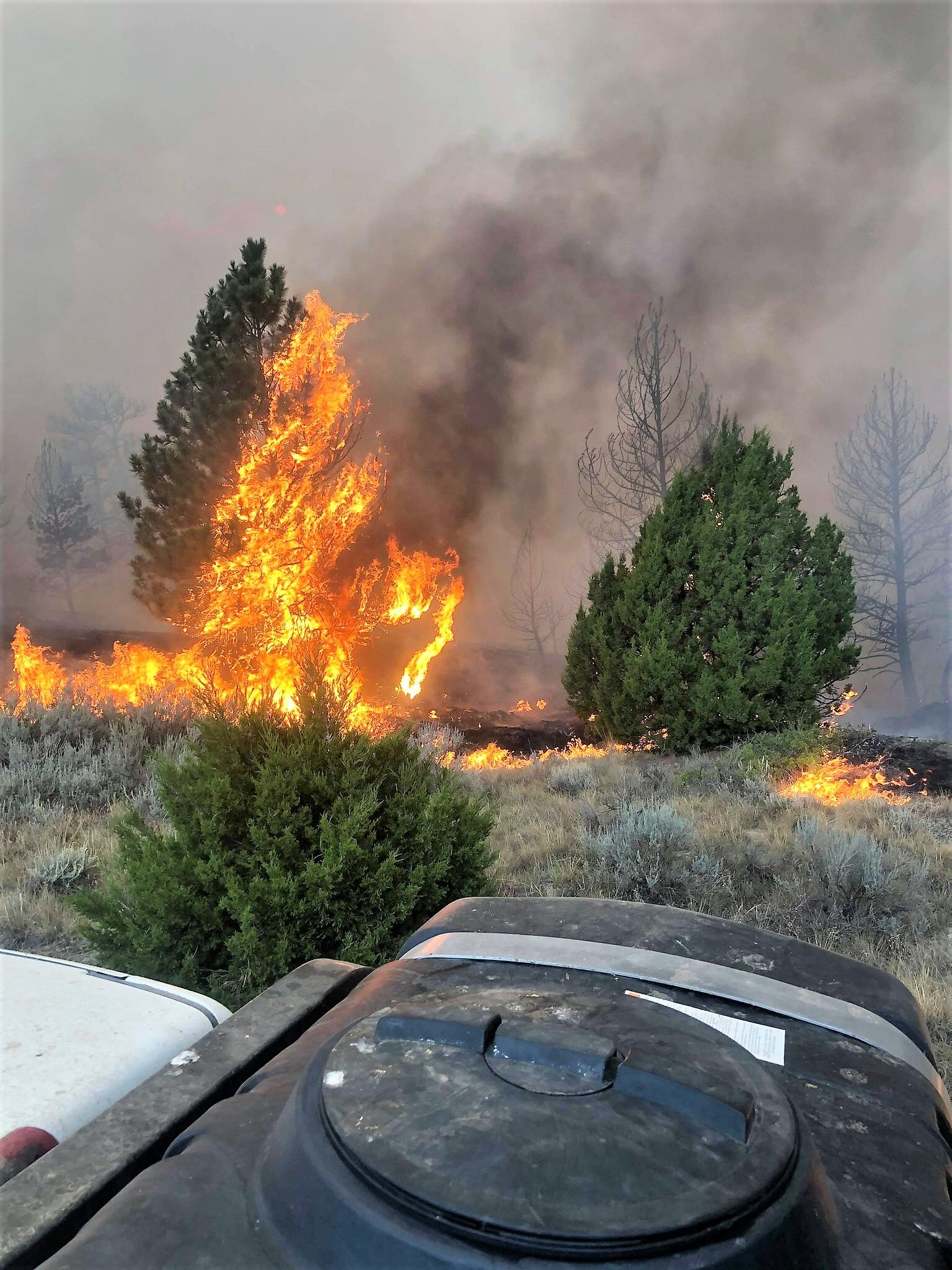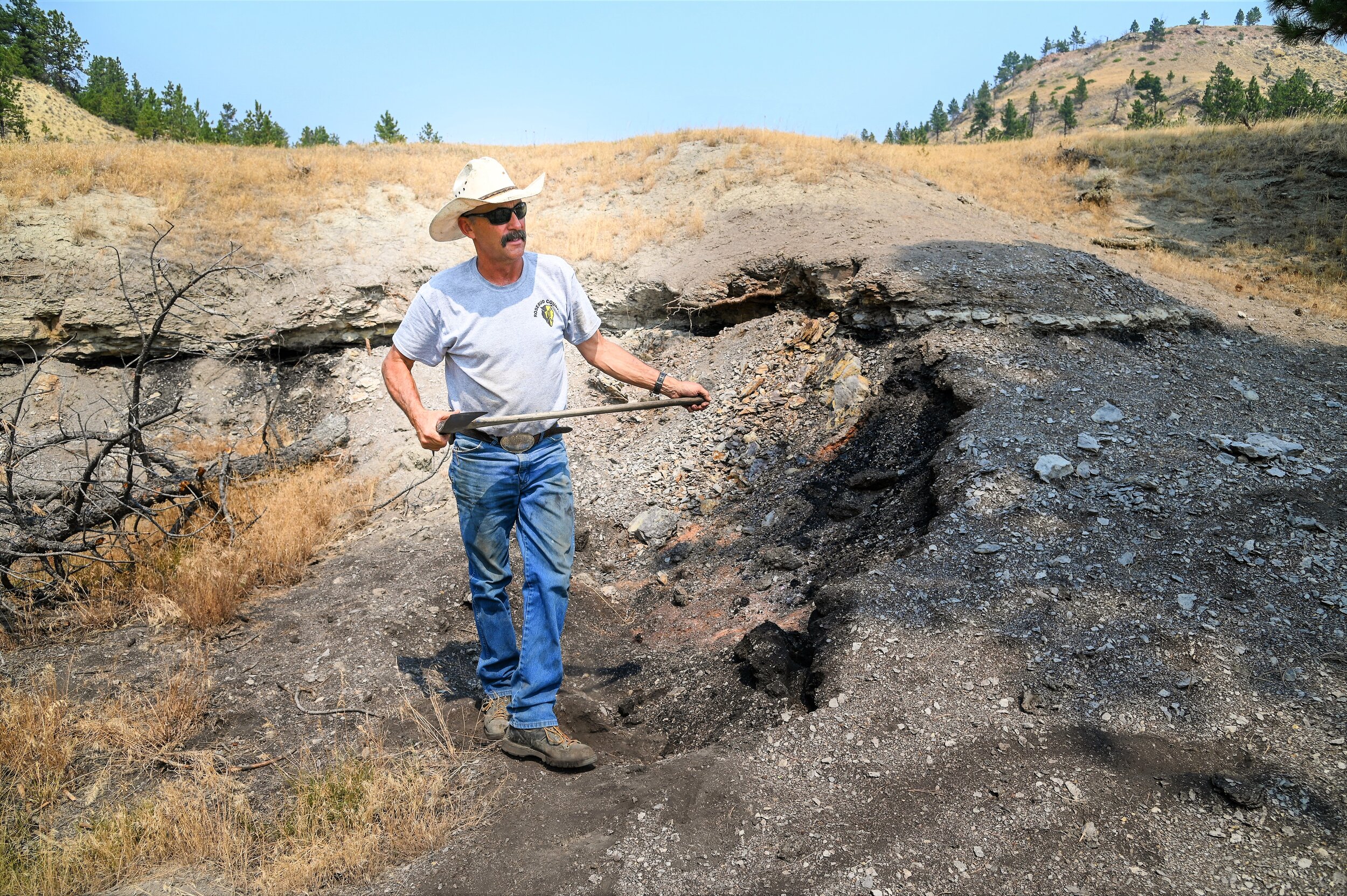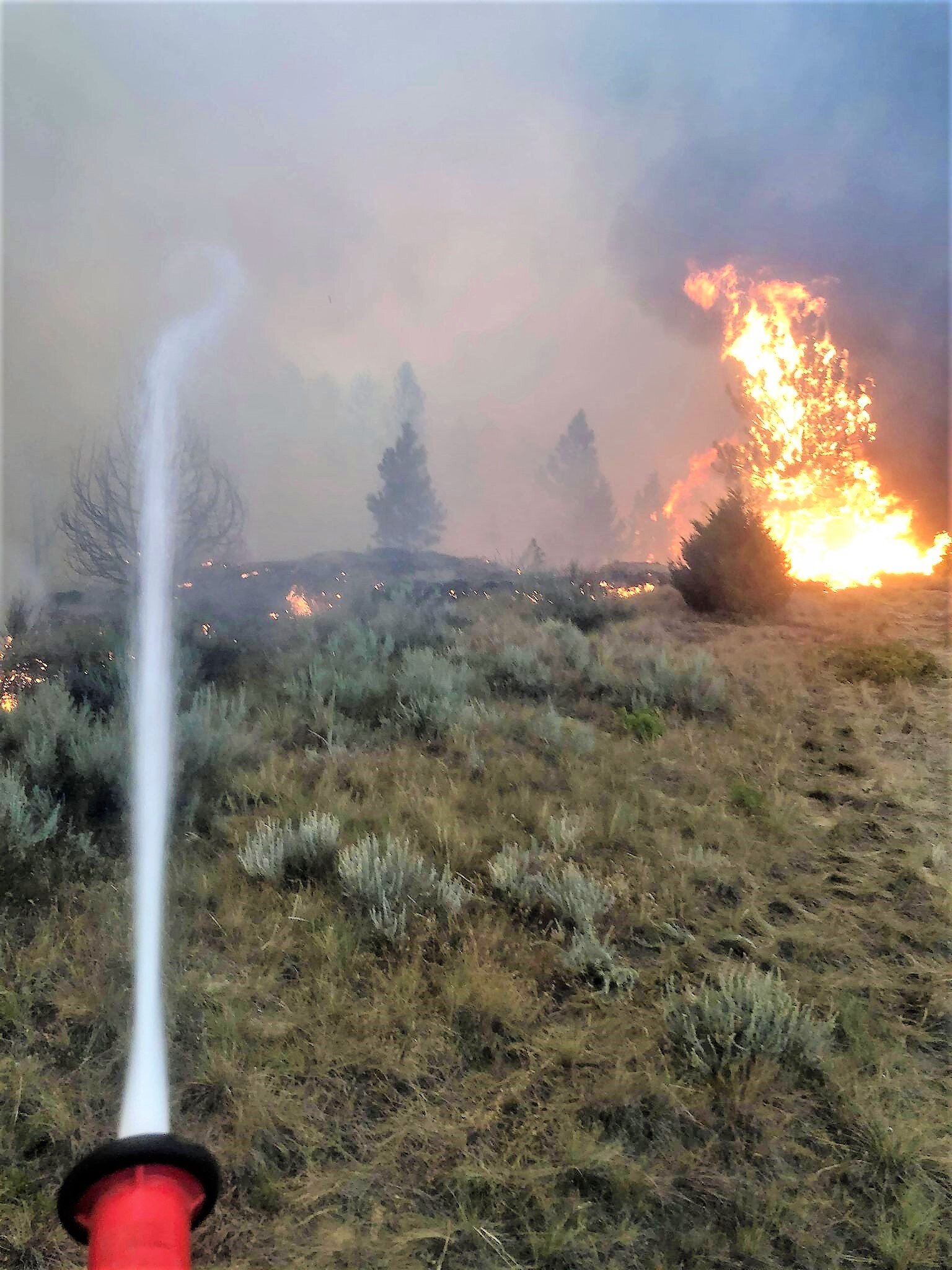Richard Spring Fire Starts from a Coal Seam
Rosebud County, MT
Written by Cyd Hoefle
Photography contributed by Heather McRae, Catherine McRae and Stu Hoefle
The Richard Spring fire in eastern Montana drew national attention when it roared to life in mid-August. Quickly consuming mountainous terrain and sweeping across prairie grasslands, the fire was vicious in its attack as it greedily devoured entire ranches in its path.
“Summers have been tough since ’12. I spend almost every day patrolling for fires, especially during dry summers like this one.””
Sparked on Aug. 8, under tinderbox-dry conditions and fanned by strong winds, the fire grew quickly into a fast-moving storm that raced through Rosebud County. Firefighters from nearby communities and area ranchers fought side by side to save homes in the fire’s path.
The speed of the fire and the unbearable heat had people scrambling to evacuate homes, move livestock and protect buildings. Amazingly, no homes were lost, and there were no serious injuries. But the evidence of the battle is still clear, as blackened yards and burnt trees surrounding homes show how dangerously close the fire crowded to structures.
Unlike other Montana fires, the Richard Spring and almost all the fires in Rosebud County this year were started not by lightning or human error, but by burning coal seams.
Coal lies beneath thousands of square miles of land in eastern Montana and coal seams have been burning for decades, as is evident by the clinker and red-stained sandstones on the tops of many bluffs. Once a seam starts burning, it will smolder continually, sometimes for decades, until all the coal has been consumed. A coal seam fire occurs when the burning seam is exposed to the surface and comes in contact with flammable materials such as dry brush, grass or tree roots.
John Bailey owns and operates the Bailey Ranch on Rosebud Creek, north of Lame Deer. He’s the fifth generation of the Bailey family to be on the ranch since the late 1880s. According to Bailey, and several other ranchers in the area, though the coal seams have been burning in the area for decades and have caused fires in the past, this year has been one of the worst.
A major part of the problem traces back to 2011. An exceptionally moist year, 2011 yielded an abundance of vegetation with enough moisture to cause erosion and landslides on many hills crisscrossing the county. With that erosion came the exposure of the coal seams.
The following year, 2012, was quite different. High temperatures and little rain dried out the vegetation, making it ripe for fire. By August, a complex of fires burned across Rosebud County and by the end of the season, 170,000 acres had burned. Unfortunately, countless numbers of exposed coal seams had ignited as well. Summers from then on would look entirely different for Bailey, who lost 20,000 acres, and for other residents of the county with shallow coal seams on their property.
“The loss has been tremendous. It will be years before the land recovers. We were dealing with a drought before this happened, so we already had ranchers worried about feed this coming winter. One rancher I know lost 20-some head of cattle during the fire. It’s been devastating.”
“Summers have been tough since ’12,” Bailey said. “I spend almost every day patrolling for fires, especially during dry summers like this one.” This season alone, Bailey has had over 20 fires on his property and, with the exception of one caused by lightning, they have all been coal seam fires.
“It’s not if we get another fire, but when,” Bailey continued. He is one of the fire marshals for the county and has a DNRC truck at the ready for fires on his place and in the county. This year he’s been out dozens of times already.
County Commissioner Ed Joiner represents the district in which the Richard Spring Fire burned, and his house, near Ashland, was in its path.
“It was a bad situation,” Joiner said. “It grew so fast. We’re very fortunate that we didn’t lose somebody.”
The fire threatened the nearby towns of Ashland and Lame Deer, both of which were evacuated, and Colstrip, which was protected by a change in the direction of the wind. Power was out for several days because of burning poles and communication was difficult with heavy smoke interfering with cell phone service. In addition to grassland and farm ground, hundreds of miles of fence line and dozens of haystacks and outbuildings burned.
“The loss has been tremendous,” Joiner said. “It will be years before the land recovers. We were dealing with a drought before this happened, so we already had ranchers worried about feed this coming winter. One rancher I know lost 20-some head of cattle during the fire. It’s been devastating.”
Farther down Rosebud Creek, Clint McRae also ranches on land that’s been in his family since the 1880s. This year, coal seam fires burned 98 percent of his ranch. He would have lost his home too without the help of others. McRae credits the unstoppable efforts of the Broadus Volunteer Fire Department, neighbors, and family for bravely holding the fire back just feet from his home and his parents’ home.
“Those guys are truly heroes,” McRae said. “They had the guts to stick around, or we’d have lost everything.”
As it is, McRae made the decision to let his ranch recover for the next couple of years, which forced him to sell his calves early and disperse most of his cows.
“It’s hard,” he said. “We lost all our pasture, our hay and all the fences. It’ll be a while before things are back to normal.”
All three men agree that being proactive about fire prevention is key, but just how to do that with coal seam fires has been an uphill battle.
Ideas they have tried to implement have not been successful. With the federal government owning most of the mineral rights and thousands of surface acres, most residents of the county would agree that they have some responsibility for fire protection. But help from the federal and state government has been slow in coming.
“We just want the landowners to be responsible landowners,” McRae said. “There’s no great answer, but our property is burning because of something under their property, so that needs to be addressed.”
“Yes, the fires are on my property,” Bailey added. “I get that, but I don’t own the coal and when these things spread, they affect the entire county and beyond.”
Financial resources are always a struggle. When the final tally from the devastation of this year’s fires losses are added up, it will be in the tens of millions of dollars. Fences lines, electrical poles, lost hay, buildings, grazing and displaced herds will all add to the costs.
“A line item for prevention when the state budget is being planned would make a world of difference,” Bailey said. “We don’t have a budget for fire prevention, we just wait until the fires break out and then spend far more putting them out.”
Bailey also believes a two-man crew with a caterpillar would be an asset.
“If we could berm around the exposed burning coal seams or make a guard, we could get on those fires before they had a chance to spread,” he said. “But it would take a crew months to do that.”
Because there are dozens of them around the county and in some precarious places, it would be a large task and, in some places, impossible given the roughness of the terrain, but there are many coal seams that could be managed properly.
“We shot our budget all to heck this season,” Joiner said. “It makes sense to try and do something before the fire season gets started. There are fire lines around some of those coal seams and it makes all the difference. We need to get them around every one that’s accessible.”
Another thought would be to get a set of eyes in the sky. A daily patrol of the area, or at least several times a week, would spot fires before they blew up. Technology today is advanced enough that Joiner and both ranchers believe a plane or even a drone with infrared capabilities would help spot fires before they have a chance to grow.
“We need a map of as many of the coal seams as we can find. That way we can monitor them more closely,” Joiner said. “There’s a lot of coal seams that are really hard to detect and knowing where they are, even if we can’t put a fire line around them, at least we could watch them.”
All three men are quick to give credit to their neighbors, the fire departments and the community for all the support that was lent to all the victims of the fires.
“We have a great community,” Joiner said. “Everyone pitched in however they could to help out.”
With the destruction the fire caused and the millions of dollars of loss, they all agreed that perhaps now some attention will be given to their county to help prevent coal seam fires from igniting and spreading to the degree that fires did this year and in 2012.
With the blessed arrival of rain and cool temperatures, in mid-August, the Richard Spring Fire was declared 100 percent contained on Aug. 20, having burned just over 171,000 acres. Meanwhile, though, the fires continue to burn underground, keeping everyone wondering just when the next seam will ignite.


